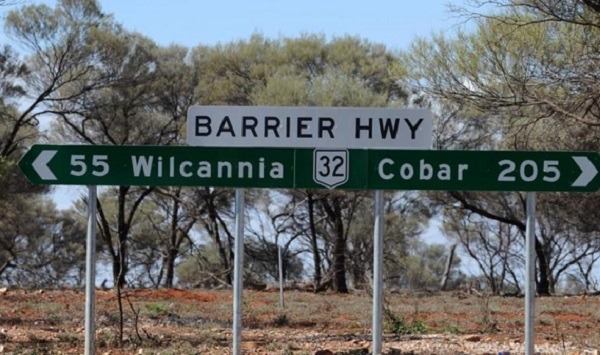In the remote, far Western NSW town of Wilcannia, an Aboriginal woman with COVID-19, who was experiencing breathing difficulties, was allegedly turned away from Wilcannia medical services on Wednesday.
According to a report by The Guardian, the woman was later airlifted to Adelaide hospital after her symptoms deteriorated and she was in a serious, but stable condition.
Speaking on a Facebook live on Wednesday, Barkindji woman Monica Kerwin, who lives in Wilcannia, explained the woman’s situation, saying the town’s medical services wouldn’t “let her in the front door”.
“We don’t have a ventilator machine here right now in Wilcannia. And this woman needs medical treatment right now, she needs a ventilator, she is struggling to breathe and she’s home down there now,” Kerwin said in the video.
“And when I rang somebody, they said: “ring triple-0”. I said: “What for? She was already at the hospital, and they wouldn’t let her in the front door”. They made her sit out in the cold.”
Kerwin said the town did not have any ventilators, and said she was worried all they had was “body bags”.
“Somebody, anybody, get this out there. This is what’s going on in Wilcannia. And I’m crying, I’m tired, and nobody’s helping us,” she said.
“Health don’t have a duty of care, they don’t have a Covid plan here, they don’t have ventilators. They don’t have anything. I think they’ve just got body bags.”
Wilcannia, located more than 550 kilometres from Dubbo, currently has the highest rate of COVID-19 transmission in NSW, more than hotspots in west and south-west Sydney. The town is home to just 750 people, the majority are Indigenous.
As of Thursday morning, 44 people had tested positive in Wilcannia. People who have been told to isolate are struggling to do so properly, as they tend to live in large households that are overcrowded. There have also been shortages of food and supplies in the town since the outbreak.
Due to supply shortages, vaccination rates in Indigenous communities in Western NSW remain critically low.
Speaking at Thursday’s press conference, Premier Glayds Berejiklian said the state government was “working really hard” to support vulnerable communities, and they would “continue to do that”. She then said responsibility of the vaccine rollout was the federal government’s.
“Certain vulnerable communities were earmarked to be vaccinated by the commonwealth many months ago, and we’re addressing those issues now, we’re stepping up as a state and supporting the commonwealth in those vaccination programs,” she said.
Speaking to 2GB on Thursday, Shadow Minister for Indigenous Australians Linda Burney said she thinks the New South Wales government “is almost in a parallel universe at the moment”.
“People in those communities feel quite abandoned. Many of those communities and I know that you know them well. Places like Goodooga, do not have a supermarket, do not have a doctor, do not have a pharmacy. There is nowhere for vaccines to be dispensed,” she said.
“And the issue is the capacity of people to cope, I mean in Wilcannia, one out of four adults have the virus, and 40%, of all people infected in the Western division are children.
“So it’s the issue of capacity of hospitals and capacity of people to cope that I’m most worried about.”
Burney also said there needs to be a national plan for Indigenous communities, and the federal government’s shambolic vaccination rollout is largely responsible.
“There is an absolute patchy rollout of the vaccine, which all – we all know is the federal government’s responsibility, but the hospitals out there are run by the New South Wales Government, and there has to be, in my view, a national plan for vulnerable, Indigenous communities,” she said.


